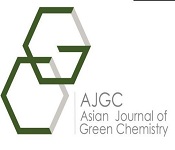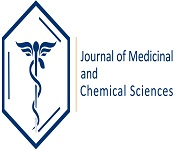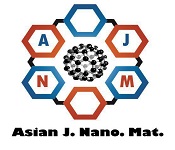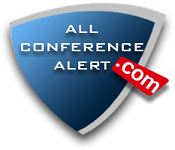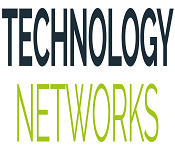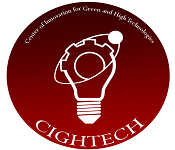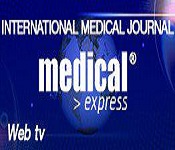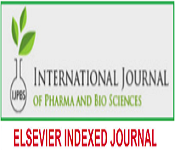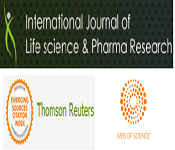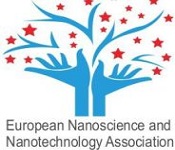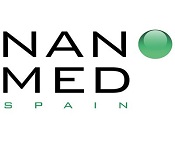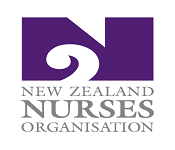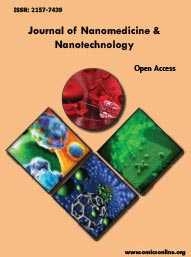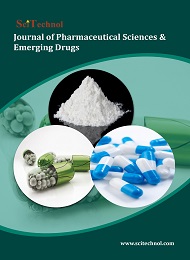Theme: Manifesting advancements in the field of Nanomedicine and Drug Delivery
Nanodelivery Congress 2019
About Congress
The 4th Annual Congress on Nanomedicine and Drug Delivery during October 21-22, 2019 is the key annual event for researchers developing next-generation delivery vehicles — targeted, responsive, biodegradable nanomaterials to make diagnostics more sensitive and drugs more effective.
The Conference, organized by conference series LLC Ltd., UK
The event represents the 4th edition of a series of international conferences held from 2016 to 2018 (Drug delivery 2016, Nanodelivery 2017, Osaka, Japan Nanodelivery 2018, Tokyo, Japan) characterized by the presence of numerous national and international speakers.
Nanodelivery congress has been held annually in different locations across Japan
Nanodelivery 2017 at Hyatt Regency Osaka, Japan.
Nanodelivery 2018 at Radisson Hotel Narita Tokyo Japan.
Over the years it has attracted over 2000 participants from 30 different countries and became one of the most awaited congresses in its field. Each year the congress comes to different properties of japan reputed Hotels, thereby promoting knowledge and becoming a major world-class scientific event for its students and scholars.
Aim and Objectives of Nanodeliverycongress, Auckland, NewZealand
- To discuss main objectives in discoveries and developments of nanomedicine and drug deliver.
- Highlight clinical objective and major opportunities for advancing nanomedicine technology to the marketplace.
- To engage and educate Pharmaceutical industry Professional, scientists, Professors, postdoctoral trainees and students from the industry platform to local University form all over the world.
- To submit joint project proposals.
- Discuss other bilateral research programs between Asian Countries, Europe, USA and rest of the world.
- This conference will act as a good platform to find partners for international research collaborations.
Close to 1,200 delivery scientists, engineers, clinicians and technical professionals from 55 countries are expected to attend for a three-day meeting featuring:
- 6+ Keynotes
- 30+ Scientific Sessions
- 6+ Mini Symposia
- 5+ Focus Groups (NEW for 2019)
- 3+ Workshops
- 30+ Exhibitors
- 100+ Abstracts ( Submit Abstract Here )
The Nanodelivery congress 2019 aim an excellent opportunity for your company to demonstrate your latest technologies and services and to communicate with a very targeted audience of researches in the continuously growing field of nanomedicine, Novel drug delivery systems, nanoparticles, Nanobiology, Nanotechnology Nanomedicine and Nanobiotechnology's, Biomedical Engineering, Vaccine Delivery, Drug Release Technology, Biotherapeutics technology, and related disciplines.
Business to Business (B2B) Industries Interaction:
We will bring many companies from across the globe to have strong Business to Business (B2B) Industries Interaction. This will open up new collaborations, joint ventures, technology transfer between multinational, medium scale and small scale industrial units across the globe.
Track:01 Advanced Nanomedicine
Advanced Nanomedicine is simply the nanotechnology applications in a healthcare setting and the majority of benefits that have already been seen involve the use of nanoparticles to improve the behaviour of drug substances and in drug delivery. Today, nanomedicine are used globally to improve the treatments and lives of patients suffering from a range of disorders including ovarian and breast cancer, kidney disease, fungal infections, elevated cholesterol, menopausal symptoms, multiple sclerosis, chronic pain, asthma and emphysema. Nanomedicine has the potential to develop radical new therapies based on an unprecedented control over both intracellular processes and the extracellular environment at the nanometer scale. To create precise solutions for intricate medical challenges in the area of wound healing, tissue regeneration and mitochondrial disease physical scientists, medical doctors, and industrial partners, work closely in the Radboud Nanomedicine Alliance. The National Nanotechnologys Initiative expects new commercial applications in the pharmaceutical industry that may include advanced drug delivery systems, new therapies, and in vivo imaging.
Track:02 Personalized Nanomedicine
Personalized medicine aims to individualize chemotherapeutic interventions on the basis of ex vivo and in vivo information on patient- and disease-specific characteristics. By noninvasively visualizing how well image-guided nanomedicines-that is, submicrometer-sized drug delivery systems containing both drugs and imaging agents within a single formulation of drug, and designed to more specifically deliver drug molecules to pathologic sites-accumulate at the target site, patients likely to respond to nanomedicine-based therapeutic interventions may be preselected. In addition, by longitudinally monitoring how well patients respond to nanomedicine-based therapeutic interventions, drug doses and treatment protocols can be individualized and optimized during follow-up. Furthermore, noninvasive imaging information on the accumulation of nanomedicine formulations in potentially endangered healthy tissues may be used to exclude patients from further treatment. Consequently, combining noninvasive imaging with tumor-targeted drug delivery seems to hold significant potential for personalizing nanomedicine-based chemotherapy interventions, to achieve delivery of the right drug to the right location in the right patient at the right time.
Track:03 Novel Drug Delivery systems
The Novel Drug Delivery Systems are the method by which a drug is delivered can have a significant effect on its efficacy. Some drugs have an optimum concentration range within which maximum benefit is derived, and concentrations above or below this range can be toxic or produce no Local Drug Delivery Systems benefit at all. On the other hand, the very slow progress in the efficacy of the treatment of severe diseases, has suggested a growing need for a multidisciplinary approach to the delivery of therapeutics to targets in tissues. From this, new ideas on controlling the pharmacokinetics, pharmacodynamics, non-specific toxicity, immunogenicity, bio recognition, and efficacy of drugs were generated. These new strategies, often called drug delivery systems (DDS), are based on interdisciplinary approaches that combine polymer science, pharmaceutics, bio conjugate chemistry, and molecular biology. On the other hand, this reference discusses advances in the design, optimization, and adaptation of gene delivery systems for the treatment of cancer, cardiovascular, pulmonary, genetic, and infectious diseases, and considers assessment and review procedures involved in the development of gene-based pharmaceuticals.
Track:04 Nanomedicine in Theranostics
Nanomedicines in Theranostics are advantageous over standard low-molecular-weight drugs in several different regards. They reduce renal excretion and/or hepatic degradation, leading to prolonged circulation times, reduce the volume of distribution, leading to less accumulation in healthy non-target tissues (‘site-avoidance drug delivery’), improve the ability of drugs to accumulate at pathological sites (‘site-specific drug delivery’) and improve the therapeutic index of drugs, by increasing their accumulation at the target site and/or reducing their localization in potentially endangered healthy organs. In addition, nanomedicine formulations assist low-molecular-weight (chemo-) therapeutic agents in overcoming several additional barriers to efficient drug delivery to pathological sites. We show that theranostic nanomedicines are highly suitable systems for monitoring drug delivery, drug release and drug efficacy. The (pre)clinically most relevant applications of theranostic nanomedicines relate to their use for validating and optimizing the properties of drug delivery systems, and to their ability to be used for pre-screening patients and enabling personalized medicine.
Track:05 Nanomedicines for targeted drug delivery
The most encouraging utilization of nanomaterials is the guarantee of focused, site-particular medication delivery. The capability of taking out a tumorous outgrowth with no inadvertent blow-back through nanomaterial-based medication delivery has made noteworthy intrigue and nanoparticles shape the reason for bio-nano-materials and real endeavors in planning drug delivery frameworks depend on functionalized nanoparticles. At first, they were contrived as bearers for immunizations and anticancer medications and after that the nanometer measure extents may altogether improve the medication delivery by influencing the bio-dissemination and toxic dynamics of medications. This can make in vivo delivery of numerous sorts of medications which present genuine delivery issues, a generally simple errand. Changing or functionalizing nanoparticles to convey tranquilizes through the blood cerebrum obstruction for focusing on mind tumors can be viewed as a splendid result of this innovation. They can infiltrate profound into tissues and are consumed by the cells proficiently. Nanoparticles have extended the extent of pharmacokinetics for insoluble medications.
Track:06 Superior Enabling Formulation Technologies
Advances which can improve solubility, bioavailability, stability, scalability and ability to manufacture.
RP Scherer Softgel Delivery Technologies
Zydis® Fast Dissolve Delivery Technology
OptiPact™ Roller Compaction
Inhalation
Fluid-bed Processing
Liquid & Sterile formulation and development
Track:07 Nanoengineered drug delivery systems
Nano engineered drug delivery systems as an effective system to defeat constraints associated with antibiotic drug therapy. Anti-infection agents epitomized into nanodelivery systems will add to enhanced administration of patients with different irresistible maladies and to beating the genuine worldwide weight of anti-microbial opposition. A broad audit of a few anti-microbial stacked Nano carriers that have been defined to target medications to irresistible destinations, accomplish controlled medication discharge profiles, and address definition challenges, for example, low-tranquilize ensnarement efficiencies, poor dissolvability and steadiness is exhibited in this paper. The physicochemical properties and the in vitro/in vivo exhibitions of different anti-toxin stacked conveyance frameworks, for example, polymeric nanoparticles, micelles, dendrimers, liposomes, strong lipid nanoparticles, lipid– polymer cross breed nanoparticles, nanohybirds, nanofibers/platforms, nanosheets, nanoplexes, and nanotubes/horn/bars and nanoemulsions, are featured and assessed.
Track:08 Biomaterials and Drug Delivery Research
Biomaterials zone look to create novel materials and apply known materials to test fundamental logical speculations over different length scales. Macroscale biomaterials are utilized to create tissue regenerative methodologies (e.g., to advance injury recuperating) and furthermore to think about the effect of the structure and physical properties of three-dimensional builds on cell conduct. Microscale delivery systems are commonly used as Scaffolddepots for privately supported, smart medication conveyance. At long last, critical spotlight is on materials of the nanoscale measurement, especially for applications in medication and quality conveyance. In the medication conveyance zone, nanomaterials are created for applications, for example, focusing of existing treatments to make them more protected and successful, empowering the helpful utilization of new classes of biologics that have noteworthy pharmacokinetic obstructions without conveyance advances, and improvement of new treatments for adjustment of the invulnerable framework. Novel medication delivery advances are being created for applications crosswise over numerous illness application regions, with specific spotlight on the zone of new treatments that can square tumor improvement and metastasis.
Track:09 Regenerative nanomedicine
This zone manages the repair or substitution of ailing or harmed tissues and organs by applying strategies from quality treatment, cell treatment, the measurements of bioactive atoms and tissue building, by invigorating repair systems of the claim body. The creation of new materials and emotionally supportive networks, the utilization of undifferentiated organisms (grown-up, embryonic and iPS) and the generation of particles and biomimetic peptides which fill in as signs for cell bond and separation are the principle focal points of this territory. The general research lines inside this zone are Molecular and cell functionalisation of biomaterials for the making of tissue designing items, Biocompatibility and harmfulness of implantable gadgets, Cellular and atomic systems ensnared in the recovery of organs and tissues.
Track:10 Synthetic Approaches in Nanomedicine
Incorporating nanoparticles for pharmaceutical purposes, for example, tranquilize planning should be possible in two techniques. Base up process, for example, pyrolysis, idle gas buildup, solvothermal response, sol-gel creation and organized media in which hydrophobic compound, for example, liposomes are utilized as bases to mount the medication. Top down process, for example, weakening/processing in which the medication is etched down to frame a nanoparticle.
Track:11 Nanoparticles and Nanomaterials in Therapy
They are different nanomedicine treatment procedures to coordinate treatment straightforwardly to ailing cells, limiting the harm to solid tissue that happen in current techniques, for example, radiation treatment cause. Particles are designed with the goal that they are pulled in to sick cells, which permits coordinate treatment of those cells. This method diminishes harm to sound cells in the body. Nanofibers can empower the generation of ligament in harmed joints. Nanoparticles, when initiated by x-beams, that create electrons that reason the devastation of malignancy cells to which they have connected themselves. This is proposed to be utilized instead of radiation treatment with substantially less harm to solid tissue. Attractive nanoparticles that connect to disease cells in the circulatory system may enable the malignancy cells to be expelled before they set up new tumors. A technique to make radiation treatment more impact in battling prostate growth is utilizing radioactive gold nanoparticles appended to an atom that is pulled in to prostate tumor cells.
Track:12 Nanomedicine Approaches in Molecular Imaging
The ongoing rise of "Molecular imaging" as an incorporated control in scholastic therapeutic focuses has set the phase for a transformative jump in demonstrative imaging and therapy. Molecular imaging is anything but a substitute for the customary procedure of picture arrangement and understanding, however is expected to enhance analytic precision and affectability by giving an in vivo simple of immunocytochemistry or in situ hybridization.
To show such nanosystems, a couple of models of MRI and ultrasound applications in atomic imaging are refered to. Paramagnetic polymerized liposomes bearing immune response ligands to neovascular integrins αvβ3 have been utilized for focusing on trial tumor angiogenesis, and amassing following 24 hours permits adequate flag for imaging. Similarly, fluid perfluorocarbon nanoparticle emulsions focused to αvβ3 likewise allow vigorous tumor imaging after just 1 hour in the dissemination, with particular take-up exhibited by in vivo rivalry experiments. Indeed, fluid perfluorocarbon nanoparticles were the main case of sub-atomic focusing on specialists comprehensively helpful for MRI of thrombi by joining counter acting agent ligands coordinated against cross-connected fibrin, and they have been demonstrated as of late to empower portrayal of trial thrombi in vivo and human unsteady carotid plaques ex vivo.
Track:13 Bioengineer for Drug Delivery
The biomaterials and medication conveyance aggregate spotlights on the union, manufacture, and assessment of biomaterials, including nanomaterials for critical applications in biomedicine. Our exploration endeavors underscore the advancement of new or enhanced biomaterials with important physical, synthetic, and organic properties. These creative materials are misused for an assortment of innovations, including imaging contrast operators, tissue building platforms, sedate conveyance, and counterfeit infections for quality treatment. For instance, the controlled arrival of bioactive atoms, for example, peptides, proteins, and plasmids, are in effect effectively researched for the treatment of human maladies and additionally for regenerative drug.
Track:14 Tissue Engineering
Tissue engineering evolved from the field of biomaterials development and refers to the practice of combining scaffolds, cells, and biologically active molecules into functional tissues. The goal of tissue engineering is to assemble functional constructs that restore, maintain, or improve damaged tissues or whole organs. Artificial skin and cartilage are examples of engineered tissues that have been approved by the FDA; however, currently they have limited use in human patients. Tissue engineering plays a relatively small role in patient treatment. Supplemental bladders, small arteries, skin grafts, cartilage, and even a full trachea have been implanted in patients, but the procedures are still experimental and very costly.
Track:15 Clinical Translation in Nanomedicine and Drug Delivery
Nanoparticle delivery systems are gaining traction in their clinical utility and are investigated for the delivery of chemotherapeutic drugs, siRNAs and other agents, and also as diagnostic and imaging applications. Physicochemical properties of nanoparticles play an important role in their biological performance. Nanoparticles of various sizes, shapes, elasticities, and surface chemistries are becoming more widely used; however, this presents a number of translational challenges from a materials point of view. Specifically, as nanoparticle delivery systems become more advanced, methods for their synthesis, scale-up, and characterization need to follow suit. Furthermore, as advancements in technology allow for precise control over all nanoparticle parameters, approaches to systematically analyze the effects these parameters have on nanoparticle performance are essential.
Track:16 Regulatory aspects on nanomedicine and drug delivery
Nanomedicine have been in the forefront of pharmaceutical research in the last decades, creating new challenges for research community, industry, and regulators. There is a strong demand for the fast development of scientific and technological tools to address unmet medical needs, thus improving human health care and life quality. Tremendous advances in the biomaterials and nanotechnology fields have prompted their use as promising tools to overcome important drawbacks, mostly associated to the non-specific effects of conventional therapeutic approaches. However, the wide range of application of nanomedicine demands a profound knowledge and characterization of these complex products. Their properties need to be extensively understood to avoid unpredicted effects on patients, such as potential immune reactivity. Research policy and alliances have been bringing together scientists, regulators, industry, and, more frequently in recent years, patient representatives and patient advocacy institutions. In order to successfully enhance the development of new technologies, improved strategies for research-based corporate organizations, more integrated research tools dealing with appropriate translational requirements aiming at clinical development, and proactive regulatory policies are essential in the near future. This review focuses on the most important aspects currently recognized as key factors for the regulation of nanomedicines, discussing the efforts under development by industry and regulatory agencies to promote their translation into the market.
Related Conferences
13th International Conference on Biologics and Biosimilars- October 24-25, 2018 Boston, USA; 3rd International Conference and Exhibition on Nanomedicine and Drug Delivery- March 13-14, 2019 | Holiday Inn Singapore; 18th International Conference on Pharmaceutics & Novel Drug Delivery Systems-May 27-28, 2019 Istanbul, Turkey; 18th Annual Congress on Pharmaceutics & Drug Delivery Systems-June 27-29, 2019 Amsterdam, Netherlands; 5th International Conference on Drug Discovery and Advanced Drug Delivery Systems & Technologies- August 19-20, 2019 Vienna, Austria
Exhibition and Sponsors

Benefit from one-on-one meetings, corporate branding and relationship building by participating as an active corporate supporter and sponsor. World Congress offers various levels of support and sponsorship opportunities at the event including but not limited to:
-
Platinum, Gold, and Silver Event Sponsorship
-
Educational Sponsorship
-
Tabletop Exhibits
-
Executive Networking Opportunities
-
Online Advertising / Sponsorships
To Inquire About Sponsorship and Executive Networking Opportunities, contact:
Riley Matthews
Nanodelivery congress Manager
Ph: +1-650-889-4686 Ext: 6094
One Commerce Center-1201 | Church field road, London,W3 6AY
Email: nanodelivery@expertscongress.com
Hashtag: #NDC2019
 @NDC2019
@NDC2019
![]() Nanodeliverycongress | Auckland, NewZealand
Nanodeliverycongress | Auckland, NewZealand
Global Pharma Universities:
- University of Maryland, USA
- University of New England, USA
- Wayne State University, USA
- University of Michigan, USA
- Ferris State University, USA
- University of Missouri, USA
- Louis College of Pharmacy, USA
- University of Minnesota, USA
- University of Mississippi, USA
- University of Montana, USA
- Dalhousie University, Canada
- Laval University, Canada
- Memorial University of Newfoundland, Canada
- University of Alberta, Canada
- University of British Columbia, Canada
- University of Manitoba, Canada
- University of Montreal, Canada
- University of Saskatchewan, Canada
- University of Toronto, Canada
- University of Waterloo, Canada
- Cardiff University, UK
- Queen's University Belfast, UK
- University of Ulster, Uk
- Aston University, UK
- Birmingham University, UK
- Sunderland University, UK
- East Anglia University, UK
- Huddersfield University, UK
- King's College London University, UK
- Nottingham University, UK
- Wolverhampton University, UK
- University Lyon, UK
- Henri Poincaré University, France
- Joseph Fourier University, France
- Lille 2 University of Health and Law, France
- Louis Pasteur University, France
- University of Paris-Sud, France
- Paul Sabatier University, France
- University of Auvergne, France
- University of Bordeaux, France
- University of Caen Lower Normandy, France
- Kaifeng Medical Specific School, China
- Lanzhou Medical College, China
- Naval Medical Specific School, China
- Second Tianjin Medical College, China
- Shandong Medical University, China
- Shanxi Medical College, China
- Pusan National University, South Korea
- Catholic University of Daegu, South Korea
- Chonnam National University, South Korea
- Chosun University, South Korea
- Chung-Ang University, South Korea
- Alexandria University, Egypt
- Assiut University, Egypt
- Beni-Suef University, Egypt
- British University in Egypt, Egypt
- Cairo University, Egypt
- Delta University for Science and Technology, Egypt
- University of Kalamoon, Syria
- Yarmouk Private University, Syria
- Wadi International University, Syria
- Al-Wataniya Private University, Syria
- Hawash Private University, Syria
Global Pharma Associations
- American Association of Colleges of Pharmacy, USA
- American Pharmacists Association, USA
- American Society for Pharmacy Law, USA
- American Society of Consultant Pharmacists, USA
- American Society of Health-System Pharmacists, USA
- Professional Compounding Centers of America, USA
-
American College of Clinical Pharmacy, USA
International Pharmaceutical Federation , USA - International Pharmaceutical Students' Federation, USA
- American Association of Colleges of Pharmacy, USA
- American Pharmacists Association, USA
- American Society for Pharmacy Law, USA
- American Society of Consultant Pharmacists, USA
- American Society of Health-System Pharmacists, USA
- Professional Compounding Centers of America, USA
- American College of Clinical Pharmacy, USA
- Canadian Pharmacists Association, Canada
- Canadian Society of Hospital Pharmacists, Canada
- College of Psychiatric and Neurologic Pharmacists, Canada
- National Pharmacy Association, UK
- British Veterinary Association, UK
- Royal College of Veterinary Surgeons, UK
- Pharmaceutical Society of Northern Ireland, Ireland
- Pharmaceutical Society of Ireland, Ireland
- Royal Pharmaceutical Society, Ireland
- European Association of Employed Community Pharmacists in Europe, France
- European Pharmaceutical Union, France
- Pharmaceutical Group of the European Union , Paris
- Philippine Pharmacists Association, phillipines
- Norwegian Pharmacy Association, Norway
- British Veterinary Association
- Chinese Pharmaceutical Association, China
- Singapore Veterinary Association, Singapore
- Iran Veterinary Organization, Iran
- Nepal Veterinary Association, Nepal
- Perhimpunan Dokter Hewan Indonesia, Indonesia
- Indian Pharmacist Association, India
- Pharmaceutical Association of Mauritius, Mauritius
- Kuwait Pharmaceutical Association, Kuwait
- The Pharmaceutical Association of Israel, Israel
- Rameda, Egypt
- Sanofi, Egypt
- Novartis Pharma, Egypt
- Glaxo Smith Kline, Egypt
- Egyptian Group, Egypt
- Sun Pharma, Egypt
- Pharco Pharmaceuticals Factory, Egypt
- Pfizer, Egypt
- Egyptian Pharmacists Co, Egypt
- Amoun Pharmaceutical, Egypt
- Lundbeck, Egypt
- El Arabi Pharma Group, Egypt
- Health Well, Egypt
Pharma Companies/Hospitals:
- Teva Pharmaceutical, USA
- NesherPharmaceutical, USA
- Aurobindo Pharmaceutical, USA
- Hauser Pharmaceutical, USA
- Lannet Pharmaceutical, USA
- Abbott Labs, USA
- Hospira Labs, USA
- Sun Pharma Labs, USA
- Astellas Pharma, Canada
- Alcon Canada, Inc, Canada
- Dalton Pharma Services, Canada
- Sunovion Pharmaceuticals Canada Inc, Canada
- Novartis Pharmaceuticals Canada Inc, Canada
- Novo Nordisk Canada Inc, Canada
- QPharm, CA USA , Canada
- Eli Lilly Canada Inc, Canada
- Halo Pharmaceutical Canada, Canada
- Tribute Pharmaceuticals Canada, Canada
- Purdue Pharma, Canada
- Teva Canada Ltd, Canada
- Taro Pharmaceuticals Inc., Canada
- Otsuka Europe, UK
- Mitsubishi Tanabe Pharma Europe, UK
- Biomarin Europe, UK
- Croda Europe, UK
- Actelion, UK
- Teva UK Ltd, UK
- Daiichi Sankyo, Germany
- Sun Pharma, Netherlands
- Kyowa Hakko, Germany
- Mitsubishi Tanabe Pharma, London, UK
- Norgine Pharma
- Drug Dependency Clinic
- Sun Pharmaceutical Industries (Europe) B.V, Netherlands
- Kyowa Hakko Europe GmbH, Germany
- ARIAD Pharmaceuticals, Switzerland
- Sun Pharmaceuticals, Germany
- Kaneka Pharma Europe N.V. German Branch, Germany
- Otsuka Pharmaceutical, France
- Alexion Pharmaceuticals, Switzerland
- Sun Pharmaceuticals, Spain
- Croda GmbH, Biocon, Malaysia
- Drug Houses of Australia (Asia) Pte Ltd, Singapore
- Biocon Limited, India
- Novartis (Singapore) Pte Ltd, Singapore
- Sanofi - Aventis, Singapore
- Columbia Asia Hospital Pune, India
- Columbia Asia Hospital - Hebbal, India
- Roche Singapore Technical Operations Pte Ltd, Singapore
- Zuellig Pharma Asia Pacific, Hong Kong
- Johns Hopkins, Singapore
- Tabuk Pharmaceuticals, Jordan
- Clinart MENA, UAE
- Bahrain Pharma, Bahrain
- Tabuk Pharmaceuticals, Saudi Arabia
- Neurim Pharmaceutical, Israel
- Mediclinic pharmacy, UAE
- Middle East Medical Center, Bahrain
- Hoffman La Roche Dubai Branch, UAE
- Mediclinic Dubai Mall, UAE
- Rameda, Egypt
- Ranbaxy Egypt Limited, Egypt
- A Sun Pharma, Egypt
- Sanofi, Egypt
- Egyptian Group, Egypt
- Glaxo Smith Kline, Egypt
- Minapharm Pharmaceutical, Egypt
- Sun Pharma, Egypt
- Pharco Pharmaceuticals Factory, Egypt
- Pfizer, Egypt
- T. Hadjigeorgiou Co Ltd, Cyprus
- Delorbis Pharmaceuticals Ltd, Cyprus
- Medochemie Limited, Cyprus
- C.Christoforou, Cyprus
Global Pharma Research Institutes:
- American Association of Pharmaceutical Scientists, USA
- American Association of Pharmacy Technicians, USA
- American College of Clinical Pharmacology, USA
- American Institute of the History of Pharmacy, USA
- American Pharmacists Association American Society for Clinical Pharmacology and Therapeutics, USA
- Gilead Sciences, USA
- Centre for Community Pharmacy Research and Interdisciplinary Studies (c/COMPRIS), Canada
- Noujaim Institute, Canada
- Pharmaceutical Society of Ireland, Ireland
- Danish Association of Pharmacologists, Denmark
- Norwegian Pharmacy Association, Norway
- European Association of Employed Community Pharmacists in Europe, France
- European Pharmaceutical Union, France
- Chinese Pharmaceutical Association, China
- Further information: Pharmacy in China, China
- The Pharmaceutical Association of Israel, Israel
- Indian Pharmacist Association, India
- Philippine Pharmacists Association, Phillipines
- Roche Middle East, UAE
- Bayer Middle East FZE, UAE
- Genpharma Servies, UAE
- Cadmiddleast Services, UAE
- National Research Centre, Egypt
- Epri - Egyptian Petroleum Research Institute, Egypt
- Hydraulic research institute (HRI), Egypt
- Hygia Institute of Pharmaceutical Education, cyprus
- CSIR-Central Drug Research Institute, India
Conference Highlights
- Advanced Nanomedicine
- Personalized Nanomedicine
- Novel Drug Delivery systems
- Nanomedicines for targeted drug delivery
- Superior Enabling Formulation Technologies
- Nanoengineered drug delivery systems
- Biomaterials and Drug Delivery Research
- Nanomedicine in Theranostics
- Regenerative nanomedicine
- Regulatory aspects on nanomedicine and drug delivery
- clinical translation in nanomedicine and drug delivery
- Tissue Engineering
- Novel synthetic approaches in Nanomedicine
- Nanoparticles and Nanomaterials in Therapy
- Nanomedicine Approaches in Molecular Imaging
- Bioengineer for Drug Delivery
To share your views and research, please click here to register for the Conference.
To Collaborate Scientific Professionals around the World
| Conference Date | October 21-22,2019 | ||
| Sponsors & Exhibitors |
|
||
| Speaker Opportunity Closed | |||
| Poster Opportunity Closed | Click Here to View | ||
Useful Links
Special Issues
All accepted abstracts will be published in respective Our International Journals.
- Journal of Nanomedicine & Nanotechnology
- Journal of Pharmaceutics & Drug Delivery Research
- Journal of Pharmaceutical Sciences & Emerging Drugs
Abstracts will be provided with Digital Object Identifier by



















